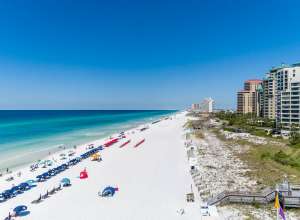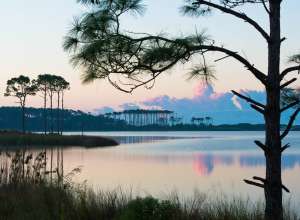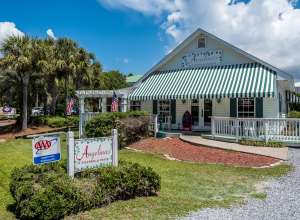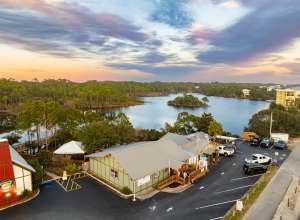Story
South Walton Sea Turtle Season Underway
May 2, 2022 by SoWal Staff

The South Walton Turtle Watch team is hard at work each and every day protecting and assisting our sea turtles for another successful sea turtle season!
Sea Turtle nesting season in South Walton is May 1st through Oct 31st each year. One of the most extraordinary things about South Walton beaches are the sea turtles that nest here. They need our help and protection to survive.
South Walton Turtle Watch is a group of volunteers whose purpose is to locate sea turtle nests and protect them during the crucial nesting and hatching season. They also respond to sick or injured sea turtles that strand on our beaches. By law, only certified, FWC permitted members are allowed to interact with these protected species.
You can help save our endangered Sea Turtles - Just remember: #CleanDarkFlat.
- Keep the beach clean at the end of the day. Take all your things off the beach. Please don't leave anything at the toe of the dune where sea turtles like to nest.
- Keep the beaches dark. Use red or amber lights if you’re out on the beach at night. Sea turtles usually nest at night and need dark beaches. Artificial lights are disturbing and will disorient sea turtles preventing them from finding the water quickly. Turn off your flashlights, cell phone lights, porch lights and pull your curtains if your house faces the beach.
- Fill in all holes before you leave the beach. If you dig it, fill it. This is not only a safety issue for sea turtles, but humans as well. Sand caves in fast. The water on our gulf coast doesn't wash over holes to fill them in at night.
Never pick up or handle turtles or push them or other marine animals back into the water. Never try to remove entanglement gear from a turtle or marine animal. Call for help before taking any action. They are protected by law. Call your local turtle watch experts who have proper training and permits to respond to them, or call FWC to report animal harassment or nest vandalism.
- SWTW Sea Turtle Hotline: 850-865-4503
- Walton County Sheriff: 850-892-8111
- Dial *FWC or #FWC from your cell phone

We all can make a difference by leaving no trace. Be responsible for your gear, holes and lights and that would make a giant difference for the conservation in our world. Ripples go a long way! Thank you for all you do!
Follow South Walton Turtle Watch on Facebook: www.facebook.com/South-Walton-Turtle-Watch-613660398647325 for updates from the team throughout the season.

SoWal Insider Tip: Visit Turtle Bale Spring fountain and sculptures on the south side of Scenic 30A in Alys Beach. It's a thrill for kids and adults and a great place for photos.
Sea turtles are protected by the Endangered Species Act and only those with special permits are allowed to touch the nests, turtles, or hatchlings. Female Sea Turtles that were born on the white sandy beaches always come back to nest on white sandy beaches. The beaches are white because they are primarily made up of quartz with very little or no shell deposits in them. When you walk on SoWal sand, it sings to you or squeaks. This is a treat. The sea turtles’ tracks on this sand show up differently than on other darker sand beaches. Because the sun reflects off this white sand the sand does not get as hot as darker beaches, this fact also effects sea turtles. The number of days it takes for the eggs to hatch are longer than on darker beaches and because the temperature of the sand effects the sex of the hatchlings, this means that these white sandy beaches produce more male sea turtle hatchlings. The fact that the ones hatched on these beaches come back makes it our duty to protect these wonderful creature in any way we can. The Loggerhead sea turtle that has hatched on these white sandy beaches is a sub population of the worlds Loggerheads and there are not many left. Sea turtles as a group have been on our earth since Dinosaur time.
Update from the Florida Fish & Wildlife Commission (FWC) 8/24/21
Sea turtles are hatching on Florida beaches; keep them safe with these tips from FWC
Sea turtles lay eggs in nests on Florida beaches beginning in the spring and throughout the summer, and now the baby turtles are hatching! The Florida Fish and Wildlife Conservation Commission (FWC) asks the public to help these tiny turtles stay safe with the following tips.
During sea turtle nesting season (March 1-Oct. 31), it is important to keep your distance from sea turtles and their nests on the beach. Sea turtles are protected, so you should allow hatchlings to crawl toward the ocean on their own. Any interference or disturbance, including getting too close, can cause hatchlings to become confused and lose their way. The trek to the water from the nest is part of the process that helps them orient themselves to their surroundings and for females to remember their home beach.
Bright lights from buildings, cellphones or cameras can cause them to become disoriented, leading the hatchlings to stray away from the shoreline where they need to swim and start their life. If they are unable to reach the ocean quickly, they can become dehydrated and exhausted, making them an easy meal for predators.
“Interfering with a sea turtle hatchling’s trek to the ocean can have fatal consequences,” said FWC sea turtle biologist Dr. Robbin Trindell. “It’s very important to leave them undisturbed. By keeping beaches dark, beachfront buildings dark and giving sea turtles space, we can make sure that our children and grandchildren can also enjoy watching them make this amazing journey.”
Did you know you can make a difference for Florida’s sea turtles? Follow these tips and share them with your community:
- Keep beaches dark. After sundown, turn off any lights not necessary for human safety. Use long wavelength amber LED lamps for lights that must stay lit and shield lights, so they are not visible from the beach. Remember to close shades or curtains at night.
- No flash photos. On the beach at night, don’t take flash photos or use bright cellphones or flashlights. This can cause turtles to become disoriented and crawl away from the ocean, putting them at risk.
- Remember, sea turtles are protected by law. Keep your distance and give sea turtles space if you see one on the beach. Never touch a nesting turtle because it might leave the beach without nesting if disturbed.
- Clear the way at the end of the day. Beach furniture, boats, toys and trash left behind on the sand can become obstacles that block crawling sea turtles. Fill in any holes dug in the sand. Holes can trap turtles and they also pose a safety risk to humans.
Please report sea turtles that are sick, injured, dead, entangled or are in danger to the FWC’s Wildlife Alert Hotline: 888-404-3922 so trained responders can help.
Learn more about Florida’s sea turtles at www.myfwc.com/wildlifehabitats/wildlife/sea-turtle. Show your support for sea turtle conservation with a specialty license plate or sea turtle decal. The funds from the sale of these decals and license plates go directly to sea turtle research and conservation.
Please donate and volunteer at:
















